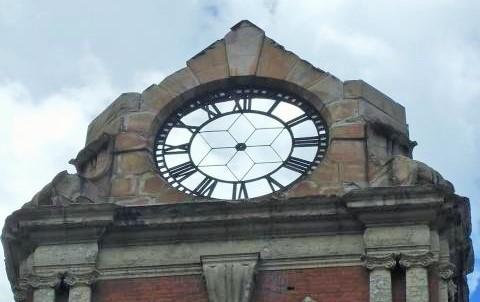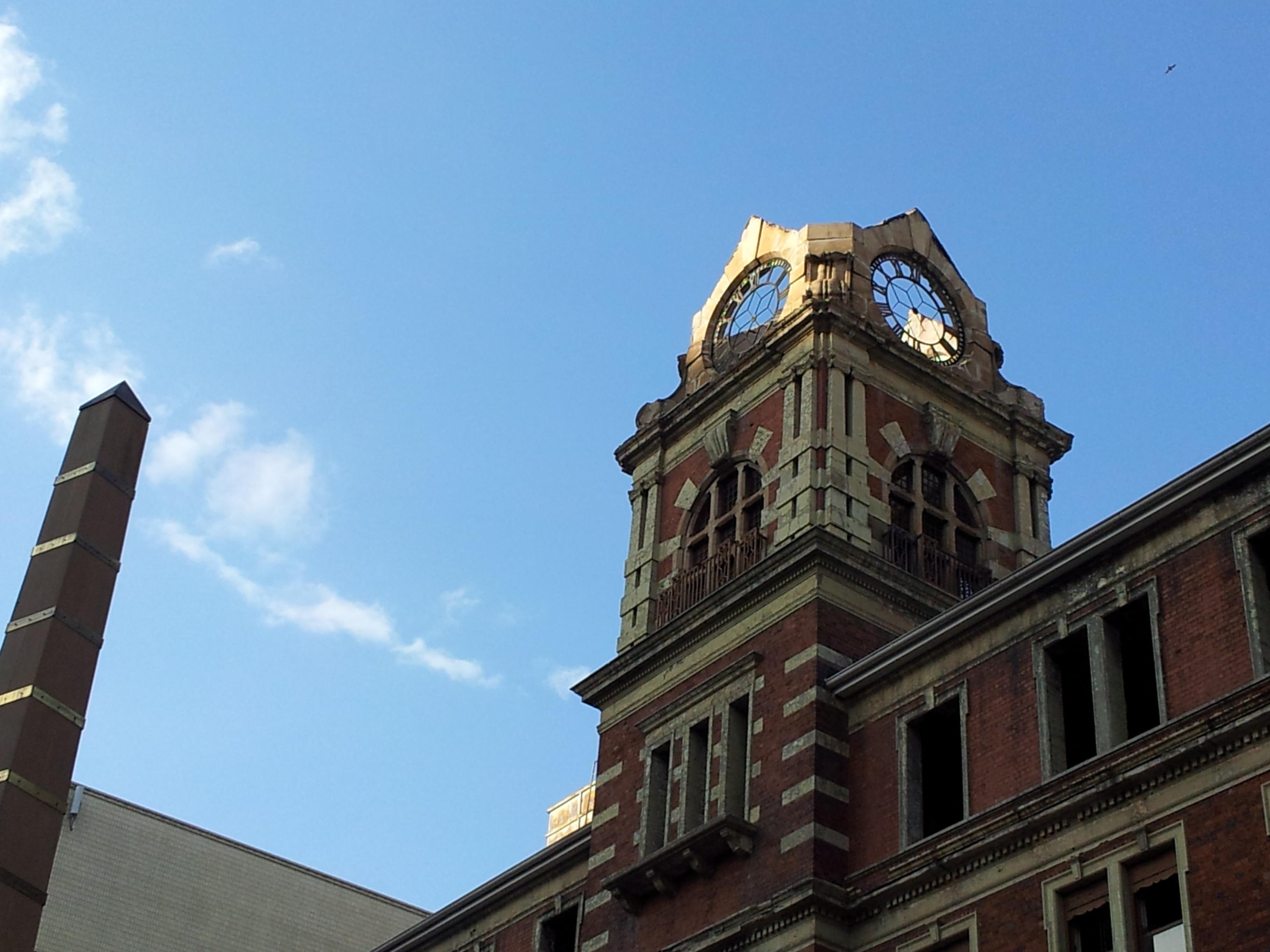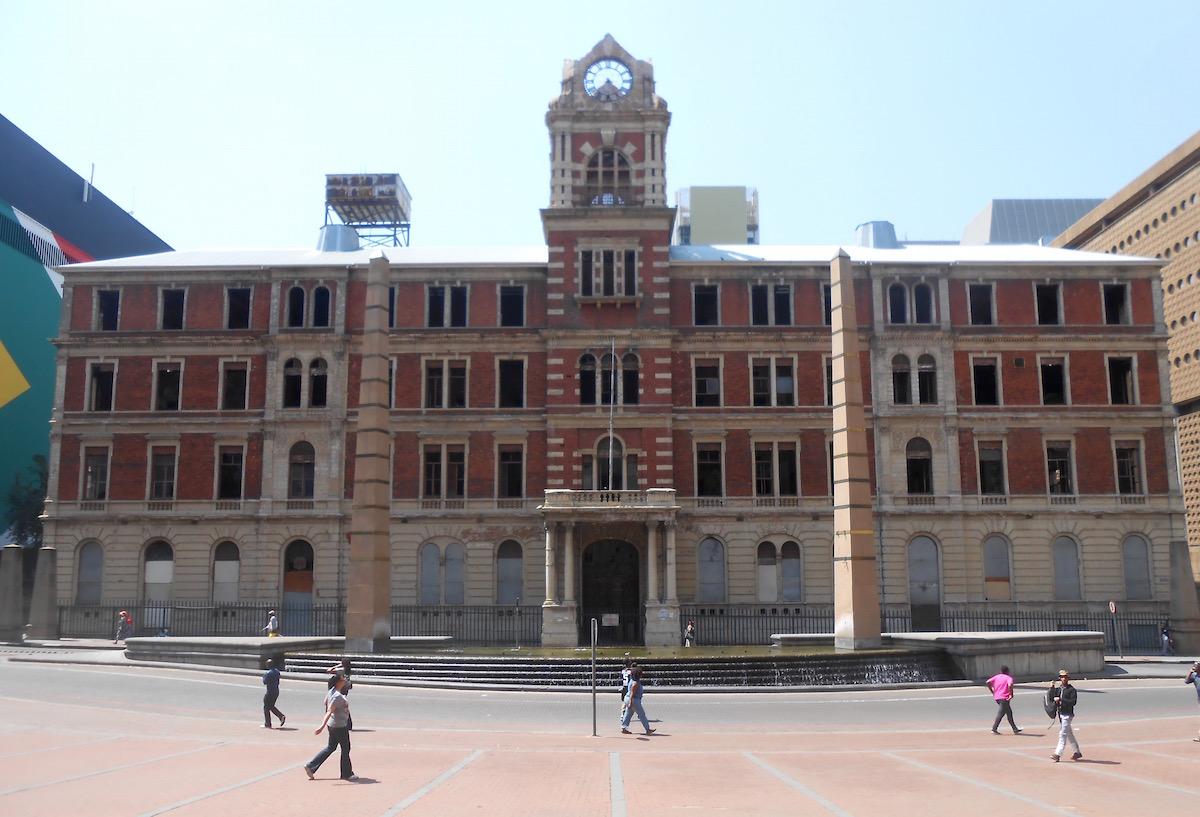
Disclaimer: Any views expressed by individuals and organisations are their own and do not in any way represent the views of The Heritage Portal. If you find any mistakes or historical inaccuracies, please contact the editor.
Louis Bonaparte Neapolitan Collins (Lou Collins) was a clockmaker based in Pritchard Street who was commmissioned to install a number of landmark Johannesburg clocks including the original Rissik Street Post Office Clock and the Markham's Clock. Over the last few days we have been corresponding with his great grandson Rowan Collins who uncovered some fascinating old letters to the editor of The Star revealing part of the story behind the Post Office Clock. Hopefully many of the details will inspire twenty-first century clockmakers in their task when the restoration of the building eventually gets underway.
The correct name of Johannesburg's Old Post Office clock is the "Coronation Clock'. This might be a good point for city councillors to stress when they next apply to the prevailing authority for the demolition of the Old Post Office.
The clock was not in existence in the year 1897, as stated in The Star and since corrected. I quote from records that the idea of the clock originated in 1902 when the Government decided that a vote of £3,000 should be granted to the town of Johannesburg wherewith to purchase a clock as a memento of the King's coronation.
At that time only a few jewellers had been permitted to resume their business and none of them would undertake the task of making and erecting the timepiece. It was contemplated sending to Great Britain for quotations, when List Brothers and Colin Brothers who were well-known local clockmakers were permitted to return to their respective businesses.
Mr L. Collins drew up the plan for the Coronation clock tower. The clock was first intended to ring out 1902 and ring in 1903, but owing to the growth of the Post Office business it was decided to build another storey and heighten the clock tower. Mr J Lillico was the building contractor and was especially praised for his work. During this period the component parts of the clock were stored by Messrs. List Brothers.
Rissik Street Post Office Clock (The Heritage Portal)
The official starting of the clock (according to a report of those days) took place punctually one second before noon on Saturday December 31 1904 when the Hon. Mrs J Frank Brown, wife of the Postmaster-General deftly severed the crimson ribbons which liberated the mechanism and the great clock boomed forth its "Westminster Chimes" amid loud cheers of those present while the Union Jack was simultaneously hoisted and flown from the summit of the tower.
The completed cost of the clock was between £1,400 and £1,500. Another interesting fact was that two of the bells were christened 'Little Evelyn' and 'Wee Peggy' . 'Little Evelyn' married L Collins (clock contractor) shortly afterwards. 'Wee Peggy' is the daughter of the late James Lillico, the general contractor.
The invitation to the ceremony contains an interesting photograph of the Old Post Office taken from the site of the present City Hall.
Wick Powell
* * *
In regard to the reports of the old Post Office clock not keeping time, may I point out that the late Mr Collins erected and installed this clock 43 years ago. He personally supervised its maintenance and supervising for just on 40 years. During that time, except on a few occasions when it was stopped for repairs, particular attention was paid to the timekeeping, and the clock was never allowed to be more than a few seconds out per day.
Rissik Street Post Office 2015 (The Heritage Portal)
It is true that the weight of the big hand is 40 lb, but as this is balanced by a counter weight behind the dial, connected to the motion work, it is difficult to understand why the minute hand should be wrong. For if, as your report states, there is a tendency for the big hand to travel faster on the downward journey from the twelve and slacken speed on the upward journey, then the chimes would start 1 1/2 or two minutes before the hour. This however is not the case. I made it my business to check the fact. A clock such as this should last at least 100 years.
Comments will load below. If for any reason none appear click here for some troubleshooting tips. If you would like to post a comment and need instructions click here.


